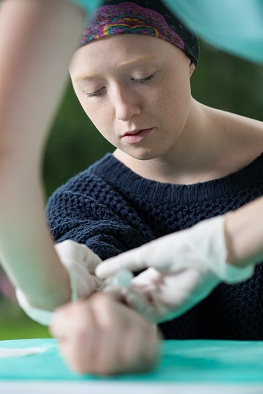Saving time, saving lives: monitoring cancer treatments

Related topics
Health Innovation Funding Researchers Marie Skłodowska Curie actions Health, Demographic Change and Wellbeing United KingdomNot all cancer treatments work in every case. Ideally, a tumour might shrink rapidly after a procedure, yet more typically, assessment is complex. Some therapies may kill the cancer without reducing tumour size. Measuring size can present another difficulty, as certain cancers visually blend into their surroundings. Delays in confirmation mean that by the time physicians try the next treatment, the patient may be weaker and the cancer more advanced.
Clinicians want to know immediately whether a cancer is affected by a treatment, not by measuring size, but via metabolic indicators. The EU-funded project Imaging Lymphoma developed such an assessment.
The technique relies on tumours consuming huge amounts of glucose compared to other tissues. Scans of that consumption show tumours as hot spots. If a treatment is working, ‘before’ and ‘after’ pictures of the same tumour would show an almost immediate reduction in activity.
Cancer Research UK hosted the project at Cambridge University, in the laboratory of Professor Kevin Brindle. The two-year grant supported the molecular imaging work of senior research associate Tiago Brandao Rodrigues, a former recipient of an EU Marie Curie research fellowship.
Hyperpolarised magnetic resonance
Magnetic Resonance Imaging (MRI) scanners use strong magnetic fields and radiowaves to produce high-resolution views of internal body parts. However, MRIs, while yielding pictures of tissue anatomy and thus indicating the presence of tumours, offer little other information about a tumour’s activity.
Rodrigues, who is from Portugal, attacked this challenge with a technique called hyperpolarisation, which can be used to massively increase (by more than 10 000 times) the sensitivity of an MRI scanner. A hyperpolarising machine accomplishes this using extremely low temperatures. A hyperpolarised glucose mix is quickly and harmlessly injected into a patient. Metabolism takes up the glucose but does not affect hyperpolarisation. The state wears off naturally after a few minutes, during which lactate produced from the treated glucose will also be hyperpolarised and becomes highly visible in a magnetic resonance image.
The novel combination of techniques effectively maps glucose consumption, which amounts to showing tumour activity as a brightness map. The first scan establishes a standard. Following successful treatment, the hyperpolarisation scan can be repeated. In a best-case scenario, the second MRI will show reduced glucose consumption at tumour locations, meaning the therapy is killing cancer cells.
The most obvious clinical benefit for patients is precious saved time. Yet the technique is also valuable for fundamental research, as it illustrates how cancers and other tissues operate biochemically.
“This is the first time someone has been able to see complete chemical pathways operating in the body, without an invasive technique, and in real time,” says Rodrigues.
Cancer is the most important application, though for now limited to testing lymphoma in mice. Currently the work is in the pre-clinical stage, laying the foundation for human trials. The project’s developments are also relevant to many other kinds of cancer.
“Right now we’re working on brain tumours and pancreatic tumours,” Rodrigues continues, “and we will soon begin work on breast cancer.”
The technique is also applicable to neurodegenerative diseases. Establishing the chemical pathways of disease is a step towards finding treatments.
For his work, the International Society of Magnetic Resonance in Medicine awarded Rodrigues its British Chapter Prize. The research was also published in the prestigious journal Nature Medicine.
